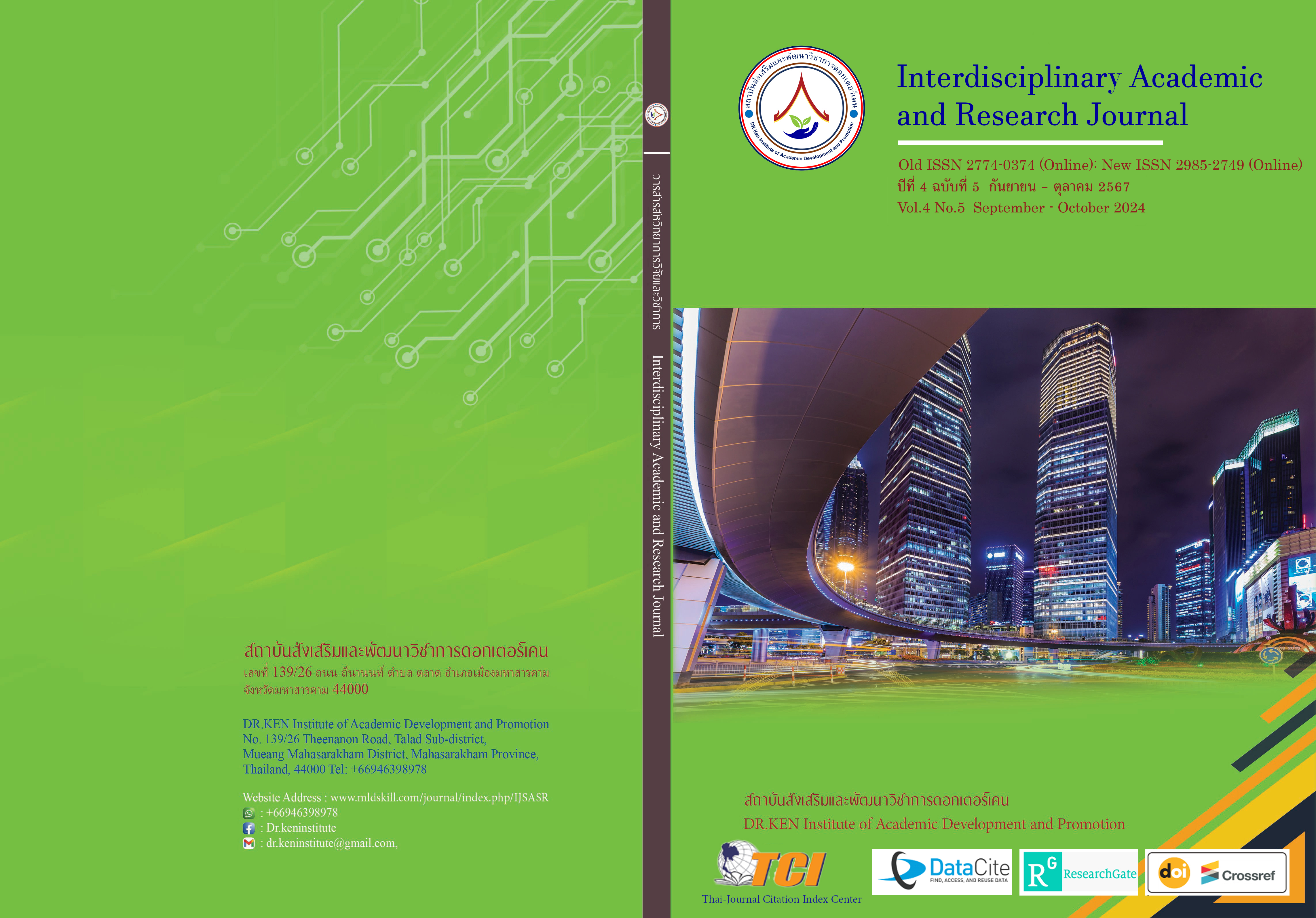Effects of Using Open Approach on Mathematical Problem-Solving Ability of Arithmetic Series of 11th Grade Students
DOI:
https://doi.org/10.60027/iarj.2024.278069Keywords:
Problem-solving Ability in Mathematics; , Open Approach; , Arithmetic SeriesAbstract
Background and Aims: Mathematical problem-solving ability is an important skill for learning mathematics. The students should always develop and practice their ability to solve mathematical problems. Designing learning management using Open approach methods in the mathematics classroom makes students discover situations or problems that cause students to think analytically synthesize and understand the problems to arrive at answers from a variety of solutions. The answers may not be the only answer. Therefore, this research aims to study the mathematical problem-solving ability regarding arithmetic series of 11th-grade students by organizing learning using an open approach method
Methodology: The target group used in this research is 11th-grade students, semester 2, academic year 2023, Wisetchaichan Tantiwitthayapoom School, Ang Thong Province, totaling 36 students which is obtained through specific selection, were organized by learning using the open approach methods. The research tools consisted of; (1) the lesson plan using an open approach method on the topic of arithmetic series, and (2) a mathematical problem-solving ability test on the topic of arithmetic series. Quantitative data analysis uses a calculation of the arithmetic mean, percentage, and mode from the test results. Qualitative data analysis was used to analyze traces of student problem-solving from recording data in activity sheets and tests using content analysis according to the mathematical problem-solving framework.
Results: It was found that; (1) the majority of students, 44.44 percent, had a very good level of mathematical problem-solving ability. (2) Most students can choose the correct formula, define variables to lead to finding the answer, provide reasonable reasons to find answers and proceed to find answers correctly.
Conclusion: Target group students who are taught using open approach methods have a mathematical problem-solving ability at a very good level. This is because the open approach method emphasizes allowing students to create knowledge and practice until learning on their own. It stimulates students to find solutions to mathematical problems and provides opportunities for students to learn according to their potential in response to the abilities that differ between individuals by relying on the help of teachers who provide advice, guidance, and support for students to manage themselves.
References
กระทรวงศึกษาธิการ.(2551). หลักสูตรแกนกลางการศึกษาขั้นพื้นฐาน พุทธศักราช 2551. กรุงเทพฯ: ชุมนุมสหกรณ การเกษตรแห่งประเทศไทย.
ณัฐกุล นินนานนท์ และปริณ ทนันชัยบุตร. (2564). การพัฒนาความสามารถในการแก้ปัญหาทางคณิตศาสตร์ของนักเรียนชั้นมัธยมศึกษาปีที่ 1 โดยการจัดการเรียนรู้ด้วยวิธีการแบบเปิด. Journal of MCU Ubon Review. 8 (1), 19 – 22
ทรงชัย อักษรคิด. (2555). การแก้ปัญหาและการตั้งปัญหาทางคณิตศาสตร์. มหาวิทยาลัยเกษตรศาสตร์ คณะศึกษาศาสตร์ ภาควิชาการศึกษา สาขาวิชาการสอนคณิตศาสตร์.
ไมตรี อินทร์ประสิทธิ์. (2549). รายงานวิจัยฉบับสมบูรณ์โครงการปฏิรูปกระบวนการเรียนรู้วิชาคณิตศาสตร์ของนักเรียนชั้นมัธยมศึกษาด้วยยุทธวิธีปัญหาปลายเปิด. คณะศึกษาศาสตร์มหาวิทยาลัยขอนแก่น.
ไมตรี อินทร์ประสิทธิ์. (2557). กระบวนการแก้ปัญหาในคณิตศาสตร์ระดับโรงเรียน. ศูนย์วิจัยคณิตศาสตรศึกษาคณะศึกษาศาสตร์ มหาวิทยาลัยขอนแก่น: ขอนแก่น.
รีชา เนาว์เย็นผล. (2544). กิจกรรมการเรียนการสอนคณิตศาสตร์โดยใช้การแก้ปัญหาปลายเปิดสำหรับนักเรียนชั้นมัธยมศึกษาปีที่ 1. ใน ดุษฎีนิพนธ์การศึกษาดุษฎีบัณฑิต สาขาคณิตศาสตร์ศึกษา. มหาวิทยาลัยศรีนครินทรวิโรฒ.
วัชรา เล่าเรียนดี. (2548). เทคนิคและยุทธวิธีพัฒนาทักษะการคิด การจัดการเรียนรู้ที่เน้นผู้เรียนเป็นสำคัญ. คณะศึกษาศาสตร์ มหาวิทยาลัยศิลปากร.
อัมพร ม้าคนอง. (2554). ทักษะและกระบวนการทางคณิตศาสตร์. กรุงเทพฯ: โรงพิมพ์แห่งจุฬาลงกรณ์มหาวิทยาลัย.
Takahashi, A. (2021). Teaching Mathematics Through Problem-Solving: A Pedagogical Approach from Japan. Routledge. DOI:10.4324/9781003015475
Downloads
Published
How to Cite
Issue
Section
License
Copyright (c) 2024 Interdisciplinary Academic and Research Journal

This work is licensed under a Creative Commons Attribution-NonCommercial-NoDerivatives 4.0 International License.
Copyright on any article in the Interdisciplinary Academic and Research Journal is retained by the author(s) under the under the Creative Commons Attribution-NonCommercial-NoDerivatives 4.0 International License. Permission to use text, content, images, etc. of publication. Any user to read, download, copy, distribute, print, search, or link to the full texts of articles, crawl them for indexing, pass them as data to software, or use them for any other lawful purpose. But do not use it for commercial use or with the intent to benefit any business.
















.png)


